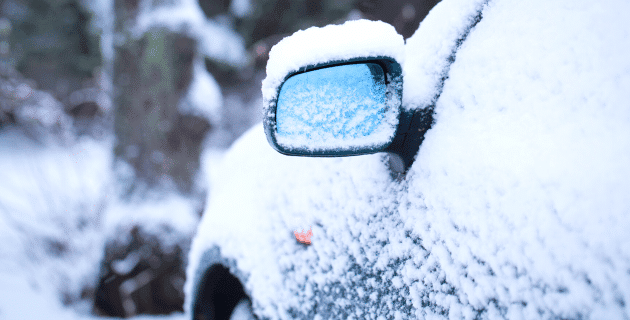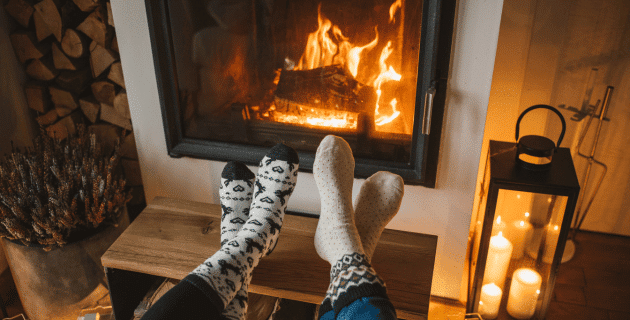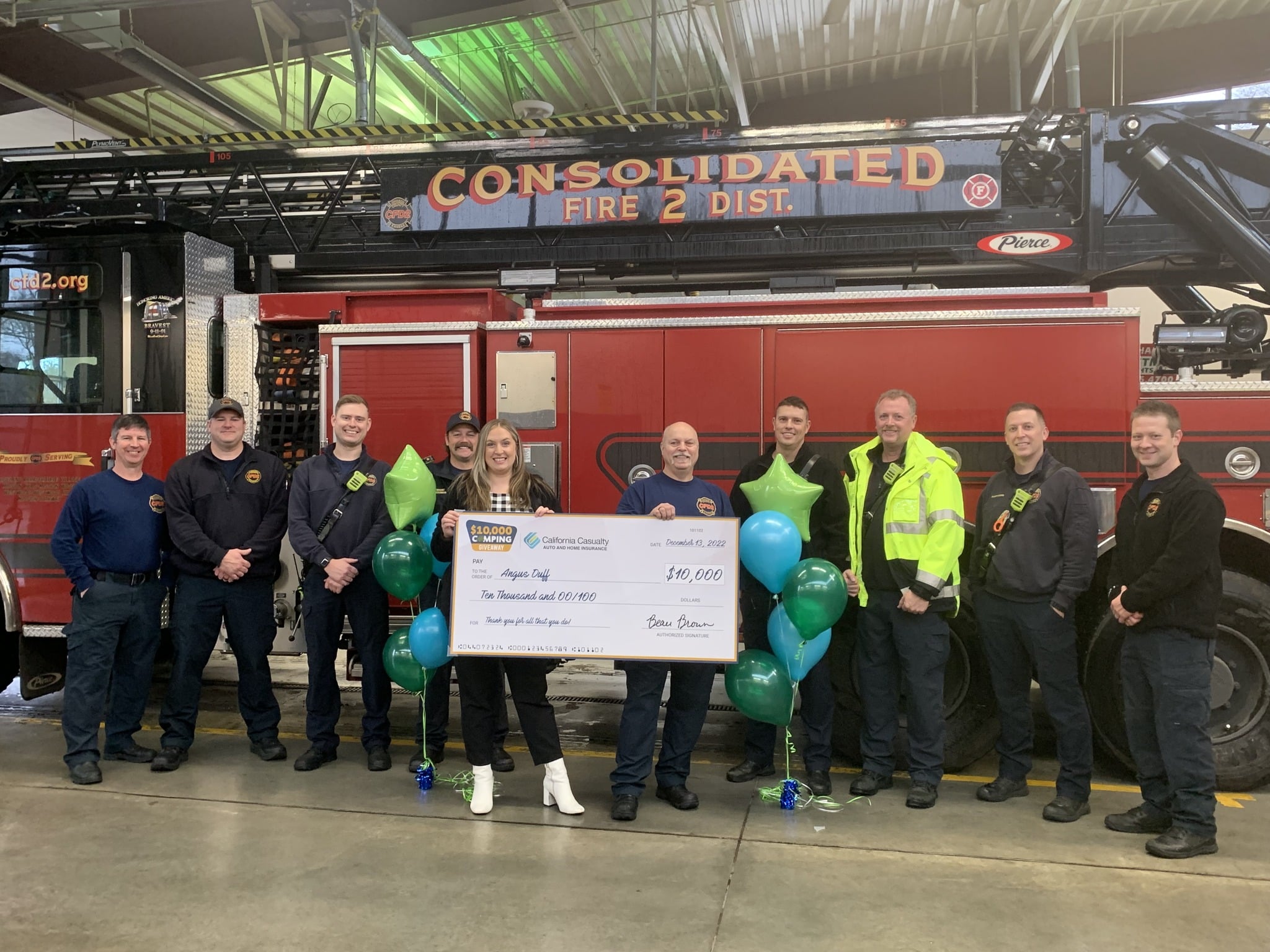
by California Casualty | Educators |
California Casualty will deliver $1,000 Thomas R. Brown Athletic Grants to educators at 50 public middle and high schools across 25 states to help support their school sports program(s). Since its inception in 2010, the Thomas R. Brown Athletics Grant Program has helped fund burdened athletic programs in 750 public schools across the nation.
The Thomas R. Brown Athletic Grant, named after avid sportsman and California Casualty Chairman, Emeritus Tom Brown, was created based on his belief that lessons learned on athletic fields- teamwork, trust, communication, and confidence- translate in the classroom and beyond. Athletic programs have a positive impact on the students, in turn, positively impacting the schools as these children use the skills they gain from playing sports to become well-rounded students and adults.
“Every year sports programs across the state do more with less. In a small district like ours, this is a very big deal when we know the positive impact sports programs make on our students.” Said one grant application from Washington Colony Athletics in Fresno, CA. “When COVID stopped our athletic program, there was not much to motivate kids to do well in school. Now that we are back playing sports we see grades getting better and the motivation to succeed in and out of class increase. We have a great athletic program that we want to continue to be better.”
California Casualty recognizes the importance of youth sports on children’s physical and mental health. And we are happy to announce that the 2022/2023 Athletic Grants will help specifically fund:
-
- Female soccer uniforms and shoes,
- Lovonya DeJean Middle School, Girls Middle School Soccer Team, Richmond, CA
- New hurdles and a high jump pit,
- Preston Middle School, Track and field, Fort Collins, CO
- Volleyball shoes and kneepads for all team members
- American Dreamer STEM Academy, Volleyball, Decatur, IL
- Cross Country uniforms, training equipment, travel suits, and a travel canopy for weather protection
- Russell County High School, Cross Country, Russel Springs, KY
- Replace outdated and worn uniforms, new basketballs, and ball racks
- Poplar Bluff Junior High, Girls’ Basketball, Poplar Bluff, MO
- Gloves, bats, helmets, catchers gear, balls, bases, and first aid equipment
- Deerfield Twp School, Softball, Rosnhayn, NJ
- Tennis rackets and warm-ups for the cold weather
- Somerset Area School District, Boy’s Tennis, Somerset, PA
- Team balls, towels, and rosin
- Lincoln High School, Girls Bowling, Tacoma, WA
A complete list of 2022/2023 recipients follows.
2022/2023 Thomas R. Brown Athletics Grant Recipients
Alabama
C.L. Scarborough Model Middle School – Mobile, Alabama – Volleyball
Arizona
Palo Verde Middle School – Phoenix, Arizona – Soccer and Basketball
Canyon View High School – Waddle, Arizona – Boys Basketball
California
Washington Colony Elementary School District – Fresno, California – Washington Colony Athletics
Coachella Valley High School – Thermal, California – Boys Tennis
Rancho Alamitos High School – Garden Grove, California – Soccer
Andrew Carnegie Middle School – Orangevale, California – Wrestling
Lodi High School – Lodi, California – Competitive Cheer
Lovonya DeJean Middle School – Richmond, California – Girls Soccer
Mira Monte High School – Bakersfield, California – Track & Field
La Contenta Middle School – Yucca Valley, California – Volleyball
Buena Park High School – Buena Park, California – Girls Soccer
John Still Middle School – Sacramento, California – Basketball
Mountain House High School – Mountain House, California – Girls Soccer
Arboga Elementary School – Arboga, California – Volleyball, Flag Football, Basketball and Track & Field
Colorado
Goddard Middle School – Littleton, Colorado – Volleyball, Basketball, Track & Field and Wresting
Preston Middle School – Fort Collins, Colorado – Track & Field
Fort Morgan High School – Fort Morgan, Colorado – Girls Wrestling
Connecticut
Torrington Middle School – Torrington, Connecticut – Track & Field
Florida
Northview High School – Century, Florida – Track & Field
Idaho
Wallace Jr/Sr High School – Wallace, Idaho – Swim Team
North Junior High School – Boise, Idaho – Boys Basketball
Illinois
American Dreamer STEM Academy – Decatur, Illinois – Volleyball
McHenry Middle School – McHenry, Illinois – Golf
Indiana
North High School – Evansville, Indiana – Flag Football, Basketball, Bowling and Track & Field
Iowa
North Scott Junior High – Eldridge, Iowa – Special Olympics
Kansas
Wellington High School – Wellington, Kansas – Special K Basketball
Lansing Middle School – Lansing, Kansas – Volleyball
Kentucky
Russell County High School – Russell Springs, Kentucky – Cross Country
Maine
Alexander Elementary School – Alexander, Maine – Soccer
Maryland
International High School at Largo – Largo, Maryland – Cheerleading
Missouri
Poplar Bluff Junior High – Poplar Bluff, Missouri – Girls Basketball
Marshall High School – Marshall, Missouri – Girls Wrestling
Montana
Wibaux Junior High School – Wibaux, Montana – Basketball
Nebraska
Chase County Schools – Imperial, Nebraska – Wrestling
New Jersey
Deerfield Township School – Rosnhayn, New Jersey – Softball
Hoboken Middle School – Hoboken, New Jersey – Soccer
Elizabeth Middle School North (School 19) – Elizabeth, New Jersey – Girls Soccer
Ohio
Centerville High School – Centerville, Ohio – Girls Wrestling
Oklahoma
Cheyenne Middle School – Edmond, Oklahoma – Special Olympics
Oregon
Thurston Middle School – Springfield, Oregon – Wrestling
Days Creek Charter School – Days Creek, Oregon – Girls Volleyball
Pennsylvania
Sharpsville Area School District – Sharpsville, Pennsylvania – Girls Soccer
Somerset Area School District – Somerset, Pennsylvania – Boys Tennis
Texas
Atkins Middle School – Lubbock, Texas – Girls Volleyball
Washington
Lincoln High School – Tacoma, Washington – Soccer and Girls Bowling
Meadowdale High School – Lynnwood, Washington – Track & Field and Cross Country
Pacific Middle School – Vancouver, Washington – Soccer
University High School – Spokane Valley, Washington – Softball
Wyoming
Natrona County High School – Casper, Wyoming – Wrestling
This article is furnished by California Casualty, providing auto and home insurance to educators, law enforcement officers, firefighters, and nurses. Get a quote at 1.866.704.8614 or www.calcas.com.

by California Casualty | Auto Insurance Info |
Brrrr…it’s cold out there. But those freezing temperatures don’t just affect us. They can also impact our cars, some even to the point where they may not start or function.
Here’s a quick checklist to help you know what to look for, and what to do, to ease the effects of frigid temps on your vehicle.
Check your tires.
A lot is riding on your tires. You want them to grip the road in all conditions, whether dry or wet, snowy or icy. However, as temperatures dip, so does the pressure in your car’s tires. That underinflation can result in serious safety issues. Underinflated tires can cause your car to lose traction, and slip and slide in wet conditions. The tires’ treads can wear unevenly. You could even be at risk for a tire blowout. Having the right tire pressure helps with a safe ride and also improves gas mileage.
What to do: Check your tire’s air pressure at least once a week and fill your tire as needed to manufacturer’s specifications. Consider getting winter tires that perform better on snowy surfaces if you live in a place with frigid temperatures.
Check the battery.
Batteries help start our cars and power electrical features. Most batteries use a chemical reaction with lead acid to generate the electric current. In freezing temperatures, this reaction is slower and your battery’s power is reduced. That means it may not have enough “juice” to start at all. This is especially true for older or weaker batteries.
What to do: If your car doesn’t start immediately, turn off the lights, heater, radio, phone chargers, and anything that is powered by your battery. Try starting your car again to see if that helps. If not, use jumper cables to get your vehicle going. In general, keep battery connections clean and free of corrosion, which will help it work to its best potential. Also, consider a battery warmer. Finally, replace your battery if it is more than 3 years old. If you’re unsure of your battery’s life, have it tested. Many auto shops offer that service for free.
Are you driving an Electric Vehicle (EV)? Cold can affect your battery too. There’s less energy for acceleration and your range may decrease. Preheat your EV before going out. Be prepared for longer charging times in winter months.
Check your fluids.
Freezing temperatures can affect your car’s oil, coolant, and transmission fluids. When it’s very cold, these fluids become so thick that the engine cannot circulate them, or has to work harder to do so. Without these essential fluids, your vehicle cannot operate properly or sometimes at all. With a lack of oil, your engine isn’t lubricated. With a lack of transmission fluid, your car struggles to switch gears. With a lack of coolant, your engine can overheat. The frozen coolant can also crack and damage your radiator hoses.
What to do: Let your car warm up fully before driving. Switch to low-viscosity oils, or synthetic oils, which flow more easily when it’s cold. Make sure there is a proper ratio of antifreeze (coolant) to distilled water. An improper mix can have a higher freezing point. You can check your coolant’s freeze point with a refractometer. Also, winter is a good time to have your transmission fluid checked and replaced if needed.
Fill your gas tank.
Gas will not freeze unless it’s 100 degrees below zero. But water in your gas tank or lines can become ice that clogs the system. The ice can make it hard to start your car or give you a sputtery ride. It also can leave you stranded with your car unable to go anywhere.
What to do: Keep your gas tank at least half full to avoid this problem. If you do get stranded with a frozen fuel line, you can get your car towed to a warm location. You also can try adding gas and/or fuel line antifreeze to the tank.
Let screens warm up.
You may notice your liquid crystal display (LCD) screens being slow in the cold. That’s because the molecules in LCDs slow down when the temperature drops.
What to do: Wait for the car to warm up, and the screens should resume their normal speed. You can install an engine block heater to help things along or park in a warmer place like a garage to minimize the cold’s effects.
Clear your windshields.
On a cold day, your breath could condense and freeze on the inside of your windshield. Keep your windshields as clear as possible with the defrost function. Windshield washer fluid also may not work as well in the cold. It may be unable to spray because it’s frozen.
What to do: You can buy windshield washer fluid that is made for cold temperatures. Even so, it could freeze, so make sure your car is warmed up before using it. Also check that your car’s defrost system is in good working order.
Check the rubber on wipers and doors.
Freezing temps can cause the rubber on your windshield wiper blades to become brittle. They could easily tear or crack, which creates blurry windshields—a recipe for car accidents. In addition, doors can freeze shut in cold temperatures, which is an added annoyance.
What to do: Consider buying winter wiper blades which are made to hold up to cold temperatures. Make sure you replace your wiper blades when they are worn. For frozen car doors, try using silicone spray on the rubber door gaskets to keep them from freezing shut.
Check your belts and hoses.
Older serpentine belts may be brittle and can break when they get cold. They also may be so cold that they don’t bend as they should. Cold weather can also take its toll on your coolant hoses. A bad belt can continue to function but there often are signs that it is failing and needs to be replaced. Listen to noises your car may make to indicate that and other problems.
What to do: Have your mechanic check the drive belt system and coolant hoses at every oil change. Replace parts when they show signs of wear and tear.
Your car is one of your greatest investments. Keep it well-maintained and protect it with the right insurance.
This article is furnished by California Casualty, providing auto and home insurance to educators, law enforcement officers, firefighters, and nurses. Get a quote at 1.866.704.8614 or www.calcas.com.

by California Casualty | Homeowners Insurance Info |
Try these clever hacks for making and keeping rooms warm this winter.
1. Change the furnace filter.
Filters get clogged with dust and pet hair. Dirty filters make your furnace work harder and less efficiently. They also impact your home’s indoor air quality. Replace your filters when they are dirty to help air circulate freely.
2. Move your furniture.
Furniture can block heat from getting into the room. Moving a couch, chair or table away from radiators or vents can help heat to flow freely. Pro Tip: Put foil behind the radiator to reflect the heat into the room.
3. Layer your bedding.
The order of the sheets and blankets on your bed can affect how warm you feel. Put sheets on first, followed by a lightweight fluffy blanket. Finish it off with a thick, dense blanket on top. This will create a heat barrier, keeping the warmth in. Add a hot water bottle by your feet for added comfort.
4. Let the sun in.
Open your curtains and let the sunshine in on sunny days. This will help to warm your home, but remember to protect against UV Rays. Then close those curtains at night to keep the heat in. Choose a heavier fabric for winter curtains to provide an extra layer of warmth.
5. Cover your windows and drafty openings.
Create a barrier between drafts and your home. Cover windows with bubble wrap. Just cut a piece to the outer edges, spray the window with water, and press the wrap firmly. Stop mini-drafts from mail slots and doggy doors with old towels. Use draft stoppers under doors. For more ideas, see our blog on Winter Window Hacks.
6. Boost your ducts.
If you have forced-air heat, you can use duct booster fans to increase the flow of air. Some plug into outlets; others are hard-wired. Just know that cheaper ones can be noisy.
7. Reverse ceiling fans.
Most ceiling fans have a switch that allows you to easily change their direction. In colder months, make sure your fan is moving clockwise. Run your fan on low and it will push the warm air downward where it’s needed.
8. Use shower steam.
Leave the bathroom door open when you’re showering. The warm steam will travel through the house. Similarly, a boiling kettle will help warm your kitchen.
9. Leave the oven door open.
After baking, leave the oven door open slightly. The heat will help warm the kitchen. A word of advice: If you have small children, pets or elderly house guests, make sure the kitchen is securely closed off and that your charges are under constant supervision while the oven is open.
10. Use a dryer to warm items.
Put your pajamas in the dryer for a few minutes before bed and you’ll be wrapped in toasty comfort. You can also use this trick for blankets, mittens, scarves, and hats.
11. Use a fireplace plug.
You can lose a lot of heat through your fireplace if there are loose dampers. Try a fireplace draft stopper to seal the flue. Be sure to measure first so you get the right fit.
12. Make your own heater.
You can transform terra cotta pots into a makeshift room heater with candles and a few other supplies. Learn how in this video, and make sure to take safety precautions if you live with children or pets. This heater can get hot and should not be left unattended.
13. Add some rugs.
Heat can escape through your floorboards, and cold can come up from your floor, especially if it is uninsulated. Cover your floors with some rugs to provide an extra layer of warmth right under your feet.
14. Use outlet insulators.
If you’re feeling a slight chill when you go to plug into your electric outlets, you’re not imagining it. Cold can come through those small openings. Pick up some outlet insulators at your local hardware store. These foam sheets are installed right behind the face plate to block drafts.
For added peace of mind, protect your home with home insurance. An annual review of your homeowner’s policy will ensure you are fully covered.
This article is furnished by California Casualty, providing auto and home insurance to educators, law enforcement officers, firefighters, and nurses. Get a quote at 1.866.704.8614 or www.calcas.com.

by California Casualty | Health |
It’s cold and flu season, and as a nurse, teacher, or parent, you’re likely surrounded by sniffling and coughing on the daily. So, at this point how can you keep yourself from getting sick?
Look no further; we’ve got you covered with the best tips to help keep you safe and sniffle-free this winter. Follow this guide to protect yourself and help boost your immune system.
Get quality sleep.
Our bodies do important work while we sleep. They repair cells and make proteins that fight infection. Getting enough sleep, and specifically, quality sleep is important to this process. We know it may be hard to get enough sleep when working 12-hour shifts as a nurse or as a parent of young children. Take the time to set yourself up for success with these tips.
-
- Set your thermostat to about 65 degrees for optimum sleeping temperature.
- Create a bedtime routine that does not include devices or television. Sometimes a warm shower or bath can help just prior to bed.
- Use a white noise machine or wear earplugs to soften distracting noise.
- Use blackout shades or curtains and/or wear an eye mask.
- Be consistent with bedtime routines for your children. If your children fall asleep within 15 to 30 minutes of going to bed, they are getting the right amount of sleep.
Pro tip: If you’re having trouble eliminating screens before bed, try wearing blue light-blocker glasses. They will help reduce the light that disturbs your circadian rhythm.
Eat immunity-boosting foods.
It’s easy to reach for prepared foods, microwave meals or vending machine finds. Resist the urge. Instead, fill your diet with the foods that help power your immune system.
-
- Choose fresh fruits and vegetables with nutrients such as vitamin C, vitamin E, and beta-carotene.
- Citrus fruits are great sources of vitamin C but so are red bell peppers.
- Blueberries are delicious as well as nutritious and can help boost your immunity.
- Broccoli and spinach are both superfoods with vitamins and antioxidants.
- Garlic and turmeric have immune-boosting properties. Ginger helps decrease inflammation.
Make sure to hydrate.
Water helps our bodies to function. Staying well hydrated helps our bodies circulate blood more easily, which allows our white blood cells to better fight off viruses. It also keeps the mucous membranes in our noses moist so they can catch viral invaders.
-
- Don’t wait until you’re thirsty to drink. By that point, you’re already slightly dehydrated.
- Choose a water bottle you love and bring it with you to work, errands, etc. Get into the habit of sipping throughout the day.
- If you’re bored with the taste of water, infuse it with lemon or cucumber to help encourage you to drink.
- Avoid other beverages so that you’ll drink more water. The caffeine in coffee and soda can dehydrate you, which has exactly the opposite effect of what your body needs.
- Green tea has only a small amount of caffeine, and tea has antioxidants. It’s a good choice if you’re looking for an alternative to coffee.
Reduce your stress.
When we’re stressed, our ability to fight off infection decreases. That’s why managing stress is so important.
-
- Take steps to avoid burnout. Slow down and give yourself breaks to protect your mental health.
- Try meditating, deep breathing, and other relaxation strategies.
- Incorporate exercise into your routine. Park farther away and walk to your destination. Take the stairs instead of the elevator. Plan a workout session that’s easy to fit into your schedule.
- Laugh more. Make time for the activities that you enjoy with the people who are important to you.
Follow healthy habits.
You can reduce your exposure to potential infections by taking the precautions that can make a difference.
-
- Continue proper handwashing habits. Wet your hands and then scrub them for at least 20 seconds with soap. That’s equivalent to humming Happy Birthday twice. Rinse with clean, running water. Use hand sanitizer when soap and water is not available.
- Reduce allergens in your home to improve indoor air quality.
- Keep your classroom at a comfortable temperature for learning.
- Don’t use handkerchiefs. Use disposable tissues and discard them when done.
- Don’t smoke. Drink alcohol in moderation. Both tobacco and alcohol can affect your body’s ability to fight infections.
- Keep up to date on your vaccinations
Do you have a way to stay healthy that’s not included in this blog? Share it with us in the comments.
This article is furnished by California Casualty, providing auto and home insurance to educators, law enforcement officers, firefighters, and nurses. Get a quote at 1.866.704.8614 or www.calcas.com.
by California Casualty | Press Releases |
During a surprise presentation held on December 13th, Kansas State Firefighters Association member, Angus Duff, was awarded California Casualty’s 2022 Work Hard/Play Hard $10,000 Camping Giveaway. Duff, a veteran firefighter and lead mechanic for Johnson County Consolidated Fire District No. 2, was chosen out of over 17,000 applicants nationwide for the contest that ran from January – November in 2022.
SAN MATEO, CA. December 16, 2022- Angus Duff, Kansas State Firefighters Association (KSFFA) member and Apparatus Operator for Johnson County Consolidated Fire District No. 2 (CFD2) has won California Casualty’s 2022 Work Hard/Play Hard $10,000 Camping Giveaway. Duff was one of over 17,000 firefighters, law enforcement officers, and EMTs to enter the national contest.
California Casualty Field Marketer, Gabby Sole, presented the check to Duff in a surprise gathering on December 13th with his shift mates at CFD2 in Prairie Village, KS.

Duff has been a firefighter for 32 years and is also the Fleet Maintenance Lead for CFD2. “The man who just won the $10,000, he’s our lead mechanic.” Said, Acting Battalion Chief Brian Montgomery, “[aside from firefighting] They pay him overtime to fix firetrucks. He’s got 3 or 4 guys working for him now… even paying him at his salary/overtime rate to work on these firetrucks it’s still less than shop rates or a mechanic that we could take it to. He saves the district a ton of money. So, $10,000; he saves us that and probably more monthly.” Over the years Angus and his team have saved CSD2 millions on apparatus repairs. Montgomery goes on to state that “No one deserves this more.”
A native of the Kansas City area, Duff says that he got into firefighting to help the people in his community. When asked what his plans are to spend his newly acquired funds he said that he will likely spend some on Christmas presents for his wife and 5 children; and that he “has a funny feeling he knows what dinner is” for his shift tonight.

This award presentation was made possible thanks to the partnership between California Casualty and KSFFA. For nearly 30 years, we’ve worked together to provide personalized auto and home insurance to firefighters throughout the state of Kansas.
The Work Hard/Play Hard community impact program was established to thank first responders for all that they do for our communities. The 2022 $10,000 Camping Giveaway was established to give first responders a “much-deserved break” with the gear needed for a relaxing experience.
Previous Work Hard/Play Hard sweepstakes from California Casualty have awarded public safety personnel with:
- Liberty Safes
- 5.11 Gear
- DeWalt Tools
- Motorcycles
- Cash
Past winners include a California SWAT Unit member, an Oregon Police officer; Colorado Sheriff’s captain; firefighters from California, Nebraska, Iowa, Ohio, and Pennsylvania; and a California Police Officer and Highway Patrolman.
Founded in 1914 and headquartered in San Mateo, California with Service Centers in Arizona, and Colorado California Casualty provides auto and home insurance to educators, firefighters, law enforcement, and nurses across the country. Learn more about California Casualty at https://www.calcas.com or call 1.800.800.9410.






